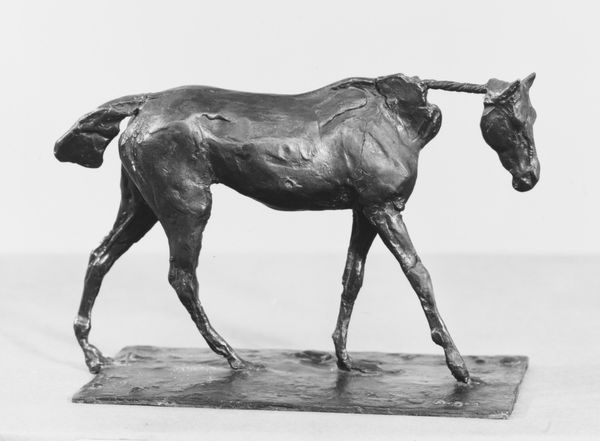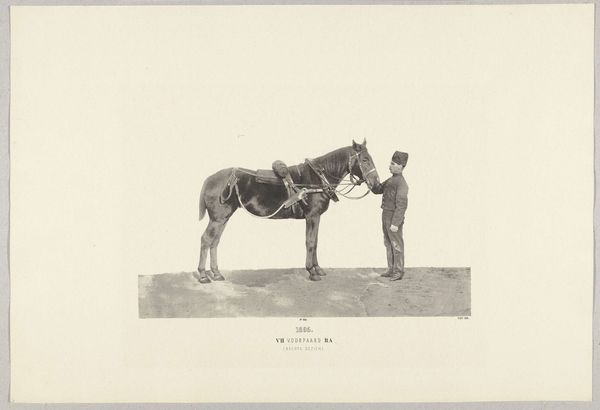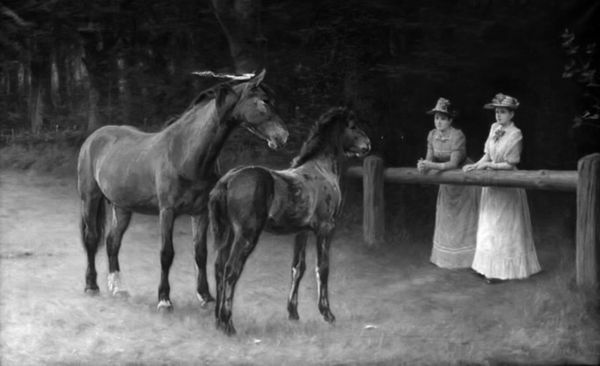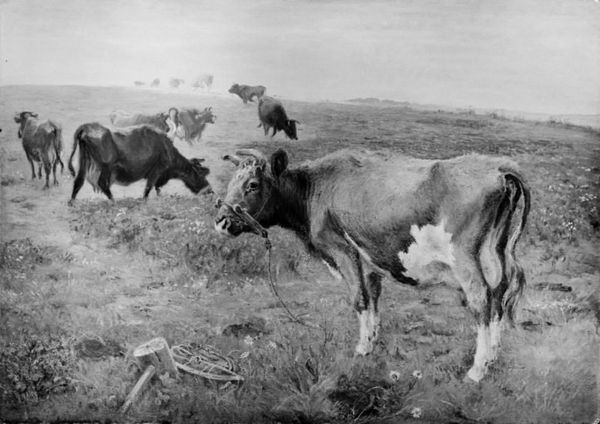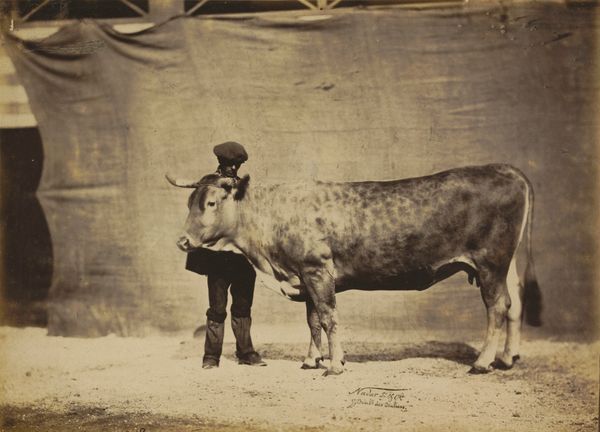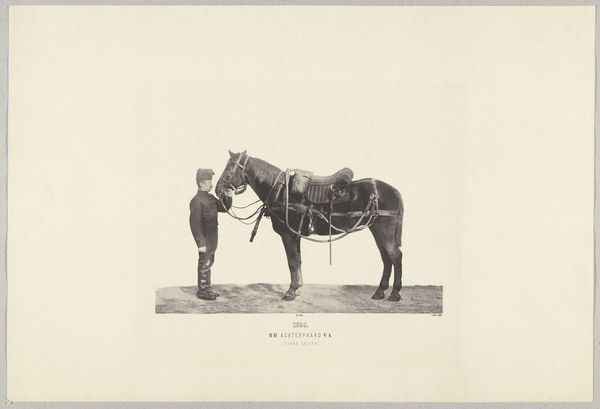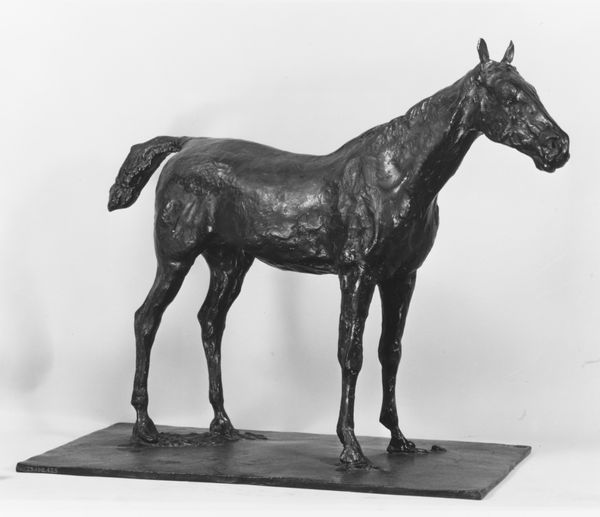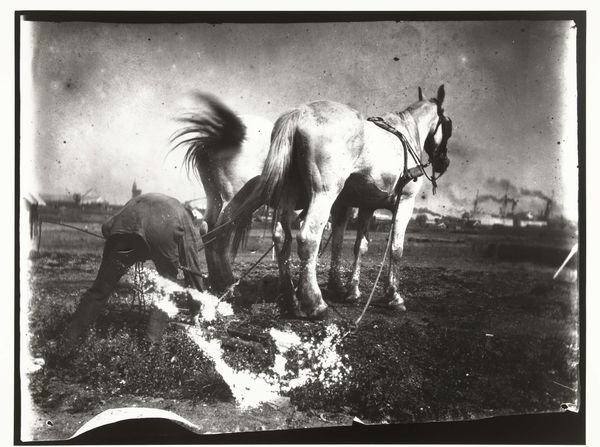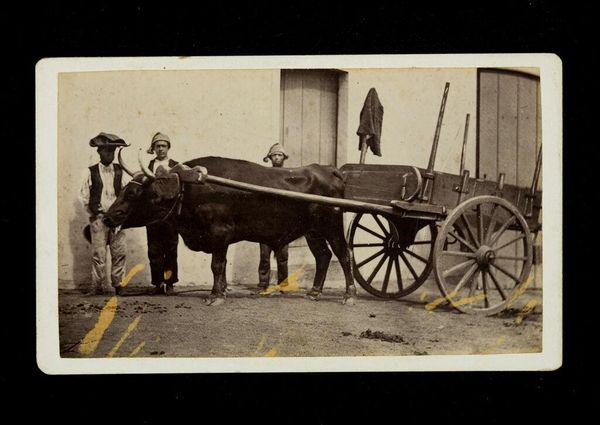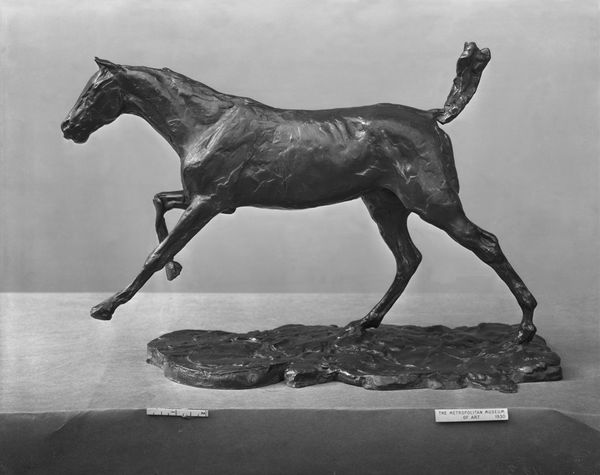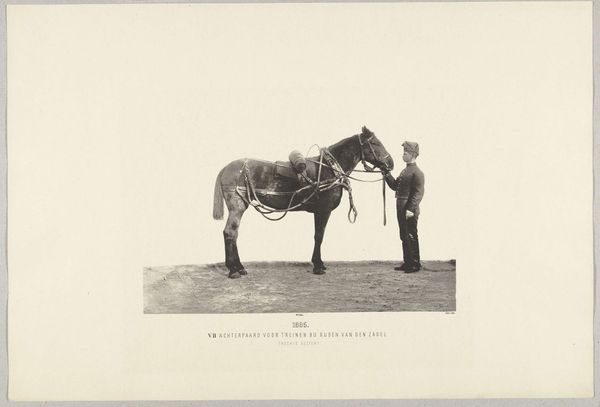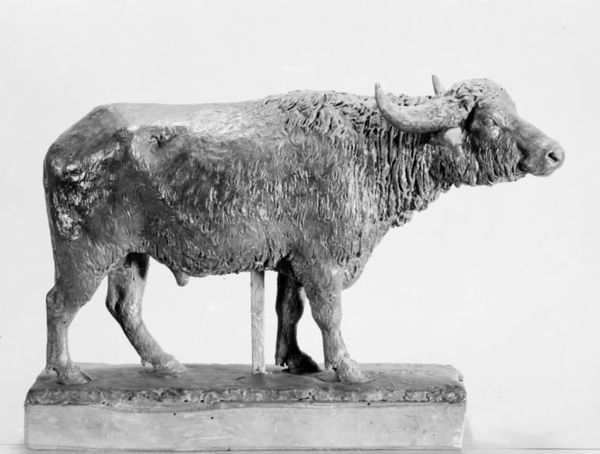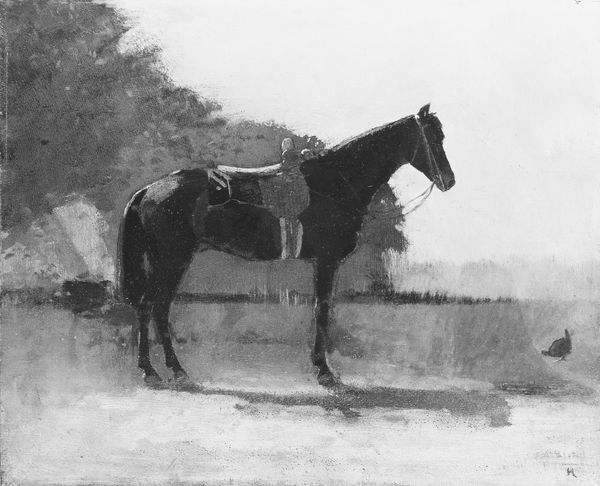
bronze, sculpture
#
sculpture
#
bronze
#
figuration
#
sculpture
#
black and white
#
monochrome
#
realism
#
monochrome
Dimensions: 32.5 cm (height) x 62.5 cm (width) x 43.6 cm (depth) (Netto)
Curator: Look closely at this bronze piece entitled "Et par heste som fodres", which translates to "A Pair of Horses Being Fed." It’s an artwork by Theodor Philipsen, created around 1906. Editor: My immediate impression is one of quietude and connection. It has an almost meditative stillness. The dark monochrome palette adds to that, like a memory half-formed. Curator: The composition is carefully rendered, the sculptor using realistic representation of figures to illustrate farm life during that time. Feeding time is, after all, when humans bond with the domesticated animals that provide essential help. The bronze becomes a symbolic testament to our intertwining existences. Editor: I am very much attuned to that aspect as well—our entanglement with the non-human. Working animals such as horses were very often rendered as metaphors of productivity in service of state interests. I wonder to what extent Philipsen might have engaged with such symbolic coding? The very materiality of bronze would also elevate such labor to heroic stature, something akin to classic sculptures… Curator: The use of bronze emphasizes the weight and physicality of these working animals. I see it differently; Philipsen's intent feels more to honor everyday rituals rather than amplify state power. Feeding becomes ritualistic: a transaction, of sustenance and trust, echoing human dependency upon animals through countless eras. There is a shared language between them. Editor: Absolutely, there is also that level to consider. Yet in art history, portrayals of laborers or the quotidian usually contain coded messages regarding contemporary anxieties or politics. The social function of rural labor cannot be discarded so easily, I’d argue. In fact, art such as this provided important opportunities to address the construction of a new, modern national identity! Curator: It's valid to think how narratives can be co-opted by larger ideological agendas! Still, my core sense of it revolves around primal symbiosis. These animals served critical roles historically; they mirror reciprocal caretaking we now observe much less because mechanized infrastructures. Philipsen honors this by rendering feeding timeless - nearly ritualizing care exchange. Editor: Agreed, but now as modern humans, especially within contexts marred heavily industrialized farming industries, we might think about if those dynamics continue serving ALL entities involved in humane manner—and the stakes involved should symbiotic exchange turn exploitive. What this sculpture thus triggers is my ethical obligations toward the creatures surrounding me presently… Curator: That opens to critical awareness indeed; past depictions also serve for reflective insights concerning ethical accountability that could steer collective consciousness more responsibly towards a common good across species! I have become alert regarding what visual legacies can teach regarding current obligations we humans owe surrounding world now due my enhanced understanding facilitated through interpreting it within progressive critical frames due reflections with you. Editor: The artwork really gains heightened value by interpreting how social theory interfaces imagery in our lives too doesn’t it!
Comments
No comments
Be the first to comment and join the conversation on the ultimate creative platform.
